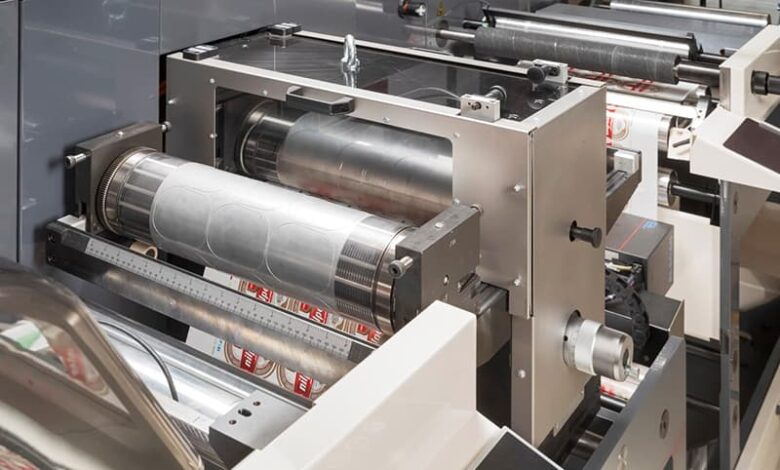Exploring the Die-Cutting Process for Label Production

Die-cutting is a critical process in label production, where labels are printed and converted on a roll-label press. This machine unwinds a reel of pressure-sensitive material, prints on it using multiple heads, and may also apply foil, emboss, varnish, or other treatments before cutting the labels into specific shapes and sizes. Afterward, the reel is slit into individual label webs and rewound, ready for application.
The choice of die-cutting method depends on the label type and specific requirements, utilizing either flexible, solid rotary, flat dies made from steel, or the more recent digital laser die-cutting technology. Each method involves shearing—the non-chipping cutting and separation of material using specialized tools. Historically, flat steel dies were prevalent, but the industry has shifted towards flexible and rotary dies due to advancements in technology and efficiency.
In the die-cutting operation, it’s crucial that the cutting die slices cleanly through the label material and adhesive without damaging the silicone-coated backing liner. This precision necessitates careful selection of tool materials, control over the manufacturing process, and consistent material thickness.
For flatbed dies, the material remains stationary during cutting, making this method suitable for shorter runs despite being slower than rotary methods. Rotary die-cutting, which uses a cylindrical die rotating against an anvil roller, is preferred for its speed and efficiency, especially for complex or high-volume tasks.
Digital laser die-cutting represents the latest advancement, offering fast, tool-less cutting suitable for a wide range of materials and shapes. This method uses a laser to cut through the material, optimizing speed based on the complexity of the design.
Properties of Die-Cutter Tooling Materials
The effectiveness of a die-cutting tool depends on several properties of tool steel:
Toughness: The ability to resist breaking or chipping.
Wear resistance: The capability to withstand abrasion from continuous use.
Heat resistance: The steel’s capacity to maintain hardness at high temperatures.
Hardness: Developed through heat treatment, it is crucial for the tool’s durability and effectiveness.
Different hardening techniques like case hardening, induction hardening, and laser hardening enhance these properties, tailored to the specific needs of the cutting task.
Die-Cutting Tools and Technologies
Each type of die-cutting tool—whether for flatbed, rotary, or laser cutting—has its advantages and limitations. Flatbed cutting is cost-effective and adjustable but slower. Rotary cutting offers greater speed and does not require depth adjustments, making it suitable for larger-scale operations. Laser cutting, meanwhile, provides versatility and cost savings on tooling for highly customized label shapes.
In conclusion, understanding the properties and applications of different die-cutting tools and methods is essential for optimizing label production, ensuring efficiency, and meeting specific product requirements. Each method has its place in the modern label production landscape, with choices often dictated by the material, run length, and complexity of the label design.





